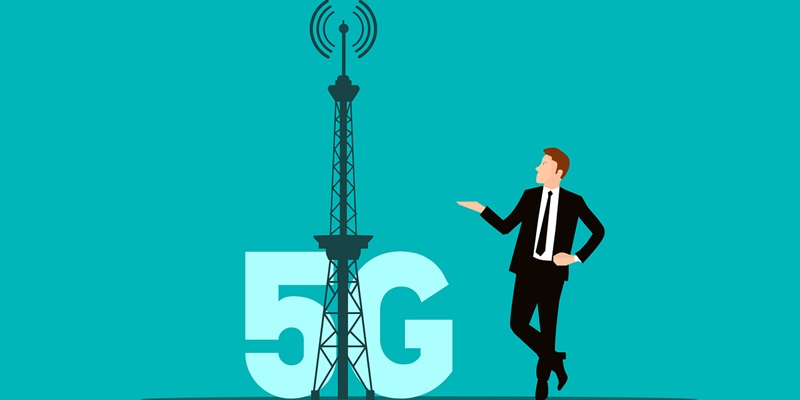The integration of 5G and software-defined networking (SDN) technologies has the potential to revolutionize the way we communicate and access information. This article explores the benefits and advantages of combining these two technologies, highlighting their impact on network infrastructure, industry-specific applications, network security, and opportunities for innovation and business growth.
Benefits of Integrating 5G and SDN Technologies
By integrating 5G and SDN technologies, network operators can create a more flexible and scalable network infrastructure. The advanced capabilities of 5G enable network operators to deliver high-speed, low-latency connections to a large number of devices simultaneously. This increased capacity and flexibility have a transformative impact on various industries.
High-speed, Low-latency Connections with 5G
The deployment of 5G enables network operators to provide lightning-fast, low-latency connections. This benefits industries that rely on real-time data processing and analysis, such as healthcare and autonomous vehicles. The combination of 5G and SDN allows for efficient handling and transmission of large amounts of data in real time.
Deployment of Centralized Network Management with SDN
SDN technologies, when integrated with 5G, enable centralized network management and control. This shift from traditional network architectures allows network operators to streamline network operations, improve efficiency, and enable dynamic allocation of network resources. With SDN, network administrators gain increased visibility and granular control over network traffic and can make real-time adjustments to meet changing demands.
Industry-specific Advantages
Real-time Data Processing and Analysis for Healthcare and Autonomous Vehicles:
The flexibility and scalability offered by the integration of 5G and SDN are particularly beneficial for industries that rely on real-time data processing and analysis. In healthcare, for example, healthcare providers can transmit large amounts of patient data securely and quickly, enabling remote monitoring, telemedicine services, and advanced data analytics. The integration of 5G and SDN enables healthcare professionals to deliver better and more efficient care.
Secure and Quick Transmission of Patient Data for Healthcare Providers
The ability of 5G and SDN to transmit data securely and rapidly is crucial in healthcare. With 5G’s increased bandwidth and low-latency connections, healthcare providers can securely transmit patient data across vast distances, facilitating collaboration and remote diagnostics. This technology offers improved patient care, especially in scenarios where time is of the essence, such as emergency situations or critical medical interventions.
Implementation of Advanced Security Features with 5G
The integration of 5G and SDN technologies enhances network security and reliability. With 5G, network operators can implement advanced security features to protect against cyber threats. Network slicing, for instance, allows for the creation of isolated virtual networks, minimizing the risks of attacks spreading across the entire network. Additionally, edge computing enables the processing and analysis of data closer to the source, reducing vulnerability to attacks.
Protection Against Cyber Threats with Network Slicing and Edge Computing
Network slicing enables network operators to divide the network into dedicated slices, each customized for specific applications. This segregation enhances security by isolating sensitive data and reducing the potential attack surface. Furthermore, edge computing allows the processing and analysis of data at the network edge, minimizing the latency associated with transmitting data to a centralized location. By reducing the distance data travels, edge computing improves network security and resilience.
New Possibilities with Increased Bandwidth and Low Latency of 5G
The integration of 5G and SDN technologies opens up new opportunities for innovation and business growth. The increased bandwidth and low latency of 5G enable companies to develop and deploy applications and services that were previously not feasible. Industries such as augmented reality, virtual reality, and the Internet of Things (IoT) can now leverage the capabilities of 5G and SDN to create immersive experiences and connect a vast number of devices seamlessly.
Development and Deployment of New Applications and Services
With the integration of 5G and SDN, companies can harness the power of these technologies to develop and deploy new applications and services. Sectors like autonomous transportation can leverage the low latency and high-speed connectivity of 5G to enable real-time communication between vehicles and infrastructure, enhancing road safety and efficiency. Likewise, industries like logistics, manufacturing, and energy can use these integrated technologies to optimize operations and enable automation.
The integration of 5G and SDN technologies represents a groundbreaking leap for communication and network infrastructure. It offers a flexible and scalable network, high-speed connections, improved network security and reliability, specific advantages for industries, and new opportunities for innovation and business growth. As more industries adopt these integrated technologies, we can expect revolutionary advancements in how we communicate, process data, and leverage technological capabilities for a better future.

